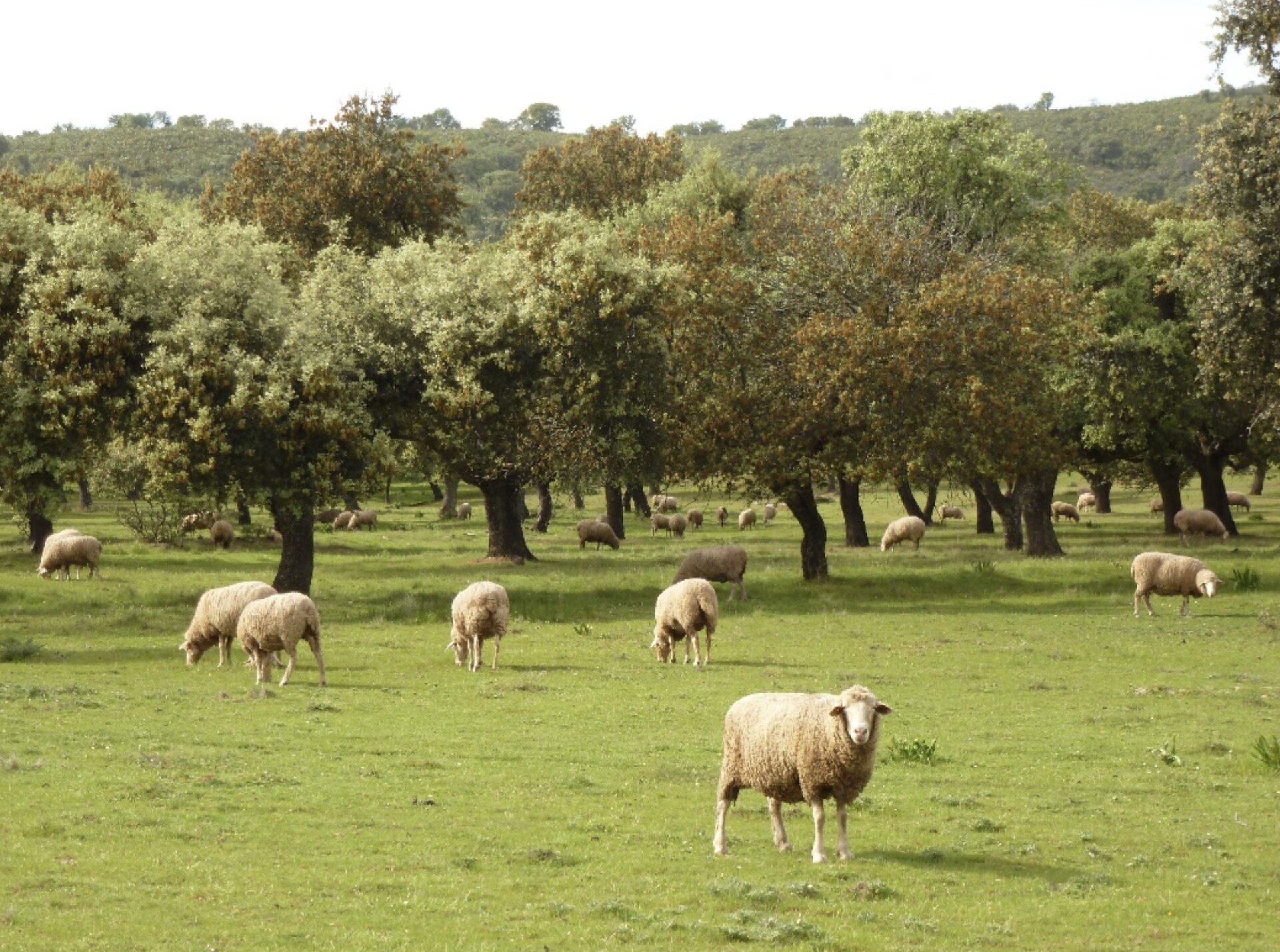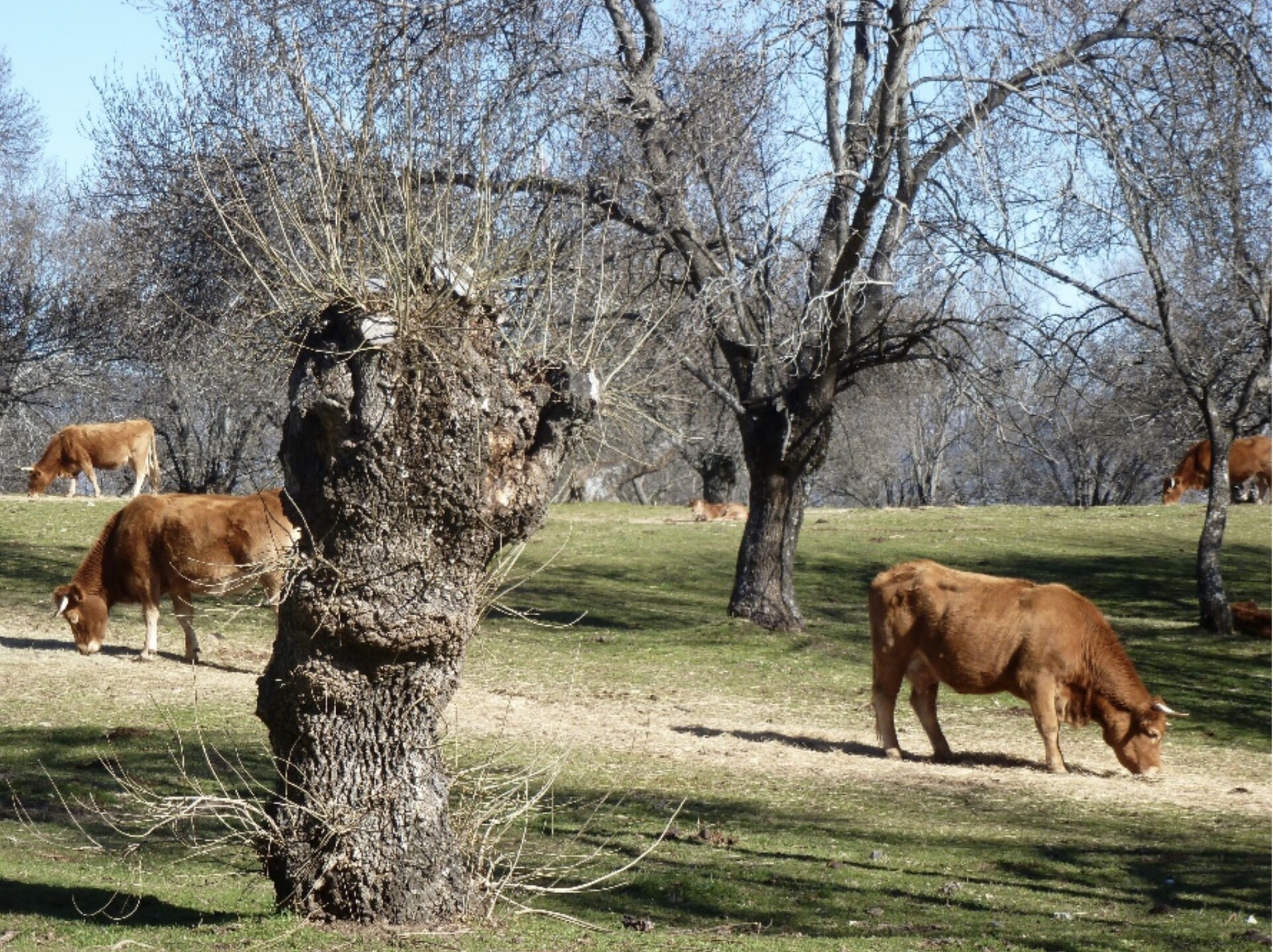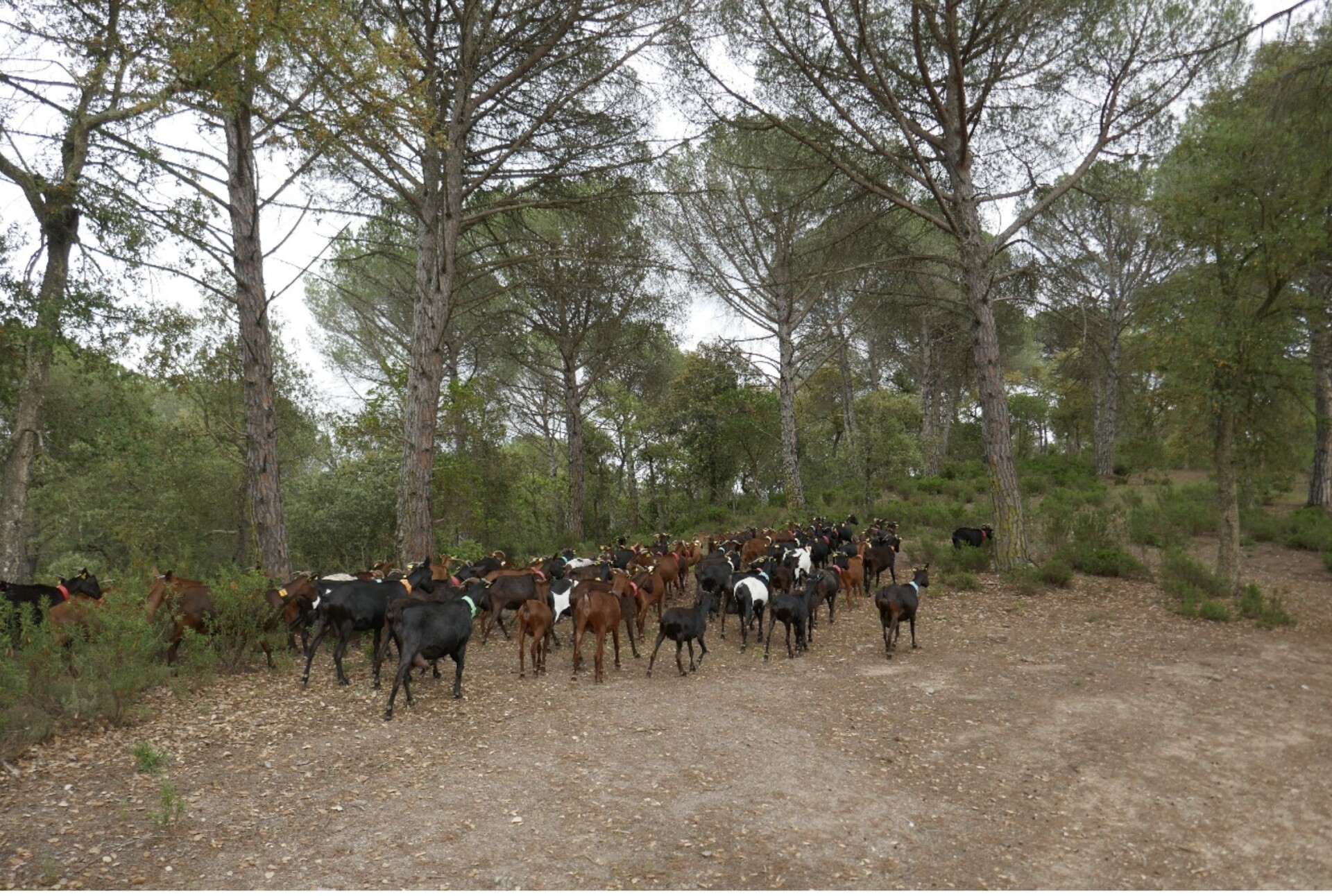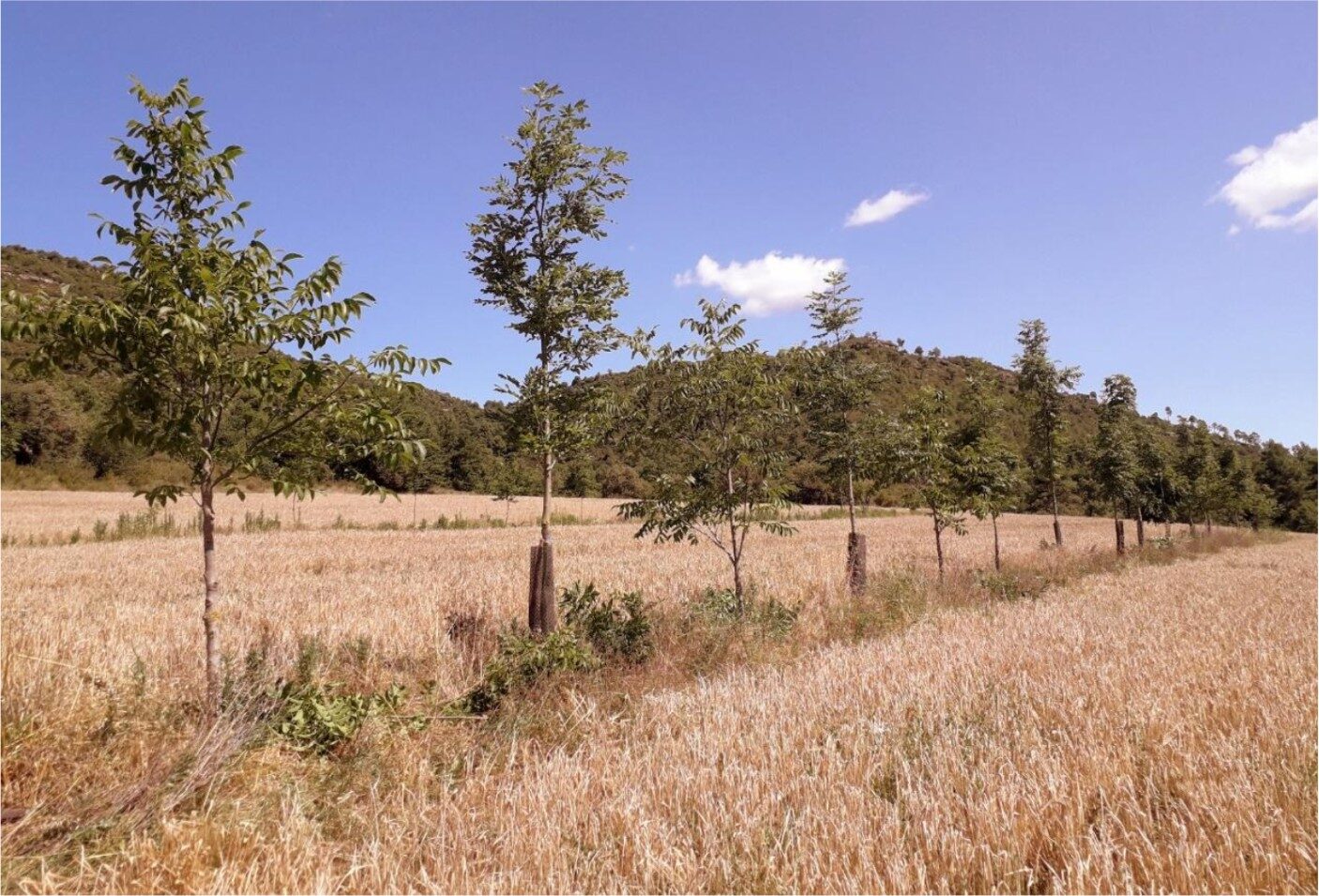Agroforestry in Spain
Agroforestry systems in Spain are a vital component of rural landscapes, combining agricultural, livestock and forestry practices that have sustained communities for centuries. With approximately 5.6 million hectares, Spain has the largest absolute extent of agroforestry of all European countries (den Herder et al., 2017). Due to the historical pastoral culture of the Iberian Peninsula, livestock plays a key role in most agroforestry systems, shaping both their structure and function. Spain, with its diverse climate and geography, hosts a wide variety of agroforestry systems adapted to local conditions and productive needs.
The various types of Agroforestry Systems in Spain include:
1. Dehesas:
Dehesas are one of the most iconic agroforestry systems in Spain, found primarily in Extremadura, Andalusia, Castilla-La Mancha, and Castilla y León. They feature scattered trees, mainly holm oaks (Quercus ilex) and cork oaks (Quercus suber), combined with pastures and, occasionally, annual crops. These systems are primarily used for livestock grazing, including Iberian pigs, sheep, and cattle, but also produce forest products like acorns, cork, and firewood. Dehesas are examples of a balanced system between production and conservation, covering approximately 3.5 million hectares in Spain. Other types of tree-dominated dehesas across Spain include Juniperus thurifera in the northern-central meseta (plateau), as well as Pinus pinea (stone pine), Quercus faginea, Quercus pyrenaica, and Mediterranean ash (Fraxinus angustifolia).

A typical dehesa with holm oak and sheep in Abadía, Cáceres (Photo credits: M. Bertomeu)

A dehesa of mediterranean ash (Fraxinus angustifolia) in central Spain. Tree pollarding provides fodder and fuelwood. (Photo credits: M. Bertomeu)
2. Silvopastoral systems in mountain ranges:
In Spain’s mountainous regions, such as the Pyrenees, Cantabrian Mountains, and Sierra Nevada, agroforestry systems combine forests of conifers or deciduous trees with extensive sheep, goat, and cattle grazing. The trees provide timber, shade, erosion control, and fodder, while pastures are used for grazing and hay production all (or most) year around. In some areas, high-value fruit trees such as chestnuts (Castanea sativa) and walnuts (Juglans regia) are also cultivated, taking advantage of the multifunctionality of these landscapes.

Sheep in a Juniperus thurifera open forest in the highlands of Tiermes, Soria. (Photo credits: J. Coello).
3. Mediterranean Silvopastoral Systems:
These systems are found in the semi-arid areas of Mediterranean Spain, where shrub vegetation, along with Aleppo pines (Pinus halepensis), holm oaks and kermes oak (Quercus coccifera) and carob (Ceratonia siliqua), are combined with sheep and goat grazing. These systems are common in the levant region from Catalonia in the north to Murcia and Almeria in the south, where water management is crucial. The interaction between trees and pastures not only helps control erosion but also improves soil quality and resilience to drought.

Goats in an Aleppo pine forest in Cassà de la Selva, Girona. (Photo credit: AGS-CTFC-AgroForAdapt).

Goats of the local Guadarrama bred grazing in a stone pine forests in Valdemaqueda, Madrid (Photo credits: M. Bertomeu).
4. Agrosilviculture with high-value Fruit Trees:
In various regions of Spain, such as the Atlantic area, the Ebro Valley, the Valencia community, and Andalusia, agroforestry systems combine annual crops with fruit trees like apple (Malus domestica), chestnut (Castanea sativa), almond (Prunus dulcis), olive (Olea europaea), and carob (Ceratonia siliqua). In these systems, trees not only diversify the production providing marketable fruits but also offer ecosystem services such as microclimate regulation, wind protection, and soil fertility enhancement through leaf litter. The starting point of these systems can be either an open area where tree rows are added, or a tree orchard that starts to be cropped to put the alleys into production.

Sheep grazing in an apple orchard in Asturias (Photo credits: J. Coello).

Sheep grazing in an olive tree orchard in Mirabel, Cáceres (Photo credits: M. Bertomeu)
5. Innovations in agrosilviculture with other added-value trees:
In the last years there is an increasing number of silvoarable designs including other trees, especially with valuable broadleaved species (walnut, cherry, ash, service tree, maple…), fast-growing poplar and holm oak (Quercus ilex) mycorrhized with black truffle (Tuber melanosporum), a symbiotic fungus that thrives in the tree’s root system. As in the previous case, the starting point can be arable land where trees are added, or tree plantations that are diversified with crops.
Within these new approaches there is a special place for the most complex modern designs including agro-silvo-pastoral regenerative systems integrating livestock managed according to rational grazing principles, as well as successional (or syntropic) agroforestry. This latter model is based on the ecology of woody species and includes complex combinations of trees and shrubs that will evolve over time occupying different strata and leading to multiple products, turning the woody rows into a proxy of a linear forest.

Alley cropping system combining hybrid lavender (Lavandula x intermedia) with holm oak trees (Quercus ilex) mycorrhized with black truffle (Tuber melanosporum) in the high steppes of San Felices, Soria. (Photo credits: AGS-CTFC-AgroForAdapt)

Alley cropping system combining winter cereal with hybrid walnut (Juglans x intermedia) and ash (Fraxinus excelsior) for valuable timber production, in Puig-Reig, Barcelona. (Photo credits: AGS-CTFC-AgroForAdapt)
SPANISH DELEGATION IN EURAF
Comunidad de Sistemas Agroforestales y Cultivos Mixtos – Community of Agroforestry Systems and Mixed Farming
In November 2023 we created a thematic social network to enhance the interactions between agroforestry stakeholders in Spain and Portugal, based on Landfiles platform. This tool was launched by PRIMA Transition and LIFE AgroForAdapt projects, while further projects including Agromix, DigitAF and Gov4All have joined afterwards.
In particular, we aim to:
(i) Promote knowledge of agroforestry systems and mixed farming as resilient systems from an economic, productive and environmental point of view.
(ii) Facilitate the exchange of experiences and information between landowners and between them and other stakeholders (consultants, researchers, administration, etc.), both through the daily interaction within the social network and in regular digital or face-to-face meetings.
(iii) Promote the consideration of agroforestry systems in the political and regulatory framework.
(iv) Disseminate actions and opportunities on capacity building, training and financing related to agroforestry and mixed crops.
By late 2025, the Community has more than 180 registered members and has held four quarterly live webinars, available on the community’s YouTube channel Since 2024, this Community is the Spanish representative of EURAF.
Delegate: Manuel Bertomeu (University of Extremadura)
Sub-delegate: Jaime Coello (Forest Science and Technology Center of Catalonia, CTFC)
Deputy delegate: Diana Jiménez (BETA-UVic)
AGROFORESTRY PROJECTS IN SPAIN
2023 – 2025. AF4EU. Agroforestry Business Model Innovation Network
2022 – 2025. DigitAF. DIGItal Tools to boost AgroForestry
2021 – 2026. LIFE AgroForAdapt. Agroforestry systems for climate change adaptation of Mediterranean agricultural and forest areas
2021 – 2024. PRIMA Transition. InnovaTive Resilient fArmiNg Systems In MediTerranean environments
2021 – 2024. AGROMIX. Participatory research for resilient land use in Europe
2017 – 2019. AFINET. Agroforestry Innovation Networks.
2014 – 2017. AGFORWARD. AGroFORestry that Will Advance Rural Development
2017 – 2023: Mosaico-Extremadura Project. Acción participativa e innovación social en la lucha contra los incendios forestales
2016 – 2022: LIFE Dehesa/Montado Adapt. Promoting Dehesa and Montado adaptation to climate change
References
Comunicaciones de la V Reunión del Grupo de Trabajo sobre Sistemas Agroforestales: Sistemas agroforestales: sostenibilidad y avances en sistemas silvoarables y silvopastorales. (2018)
Innovation leaflets from Agforward (01-06): https://www.agforward.eu/Innovation-leaflets.html
Los sistemas agroforestales en el Plan Estratégico de la PAC Español: análisis y reflexiones (2024). Artículo disponible en castellano e inglés.
Los sistemas agroforestales (2019). Dossier técnico disponible en castellano y catalán.
Manual de Sistemas Agroforestales de AFINET: https://agroforestrynet.eu/?lang=es
